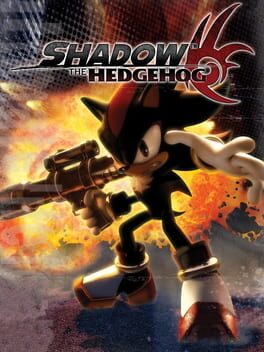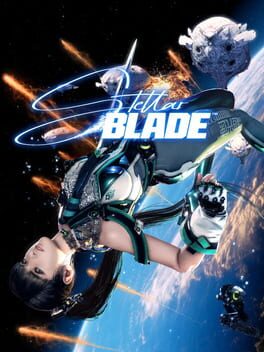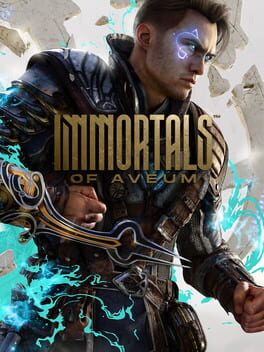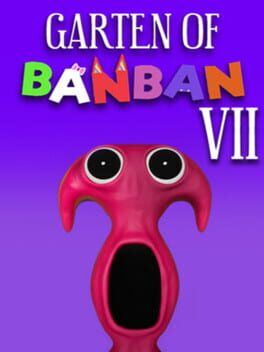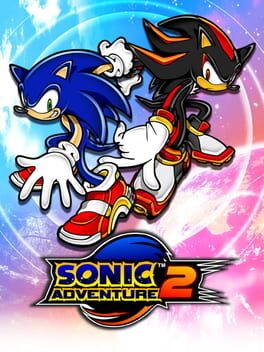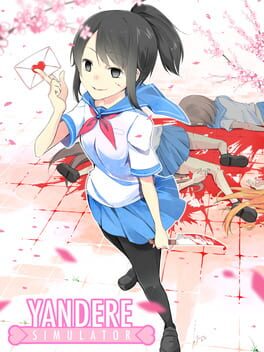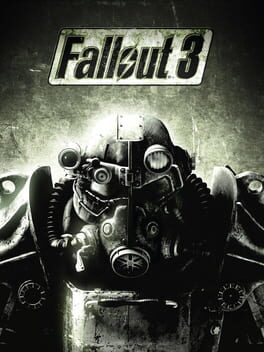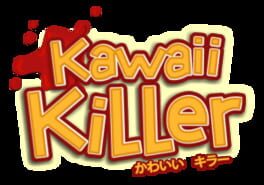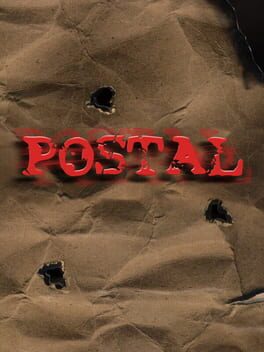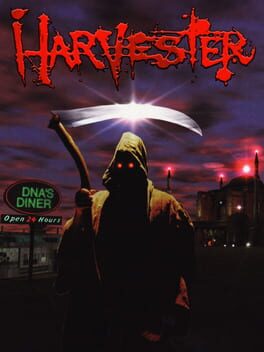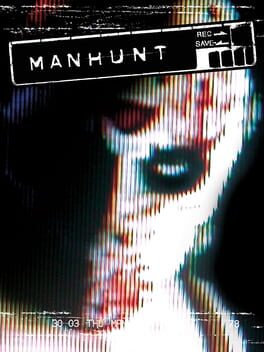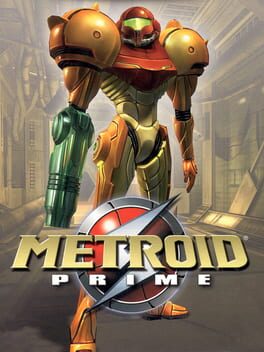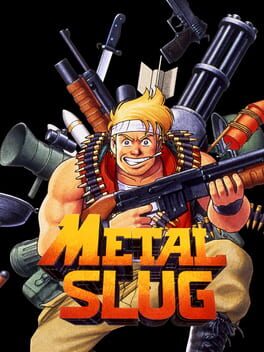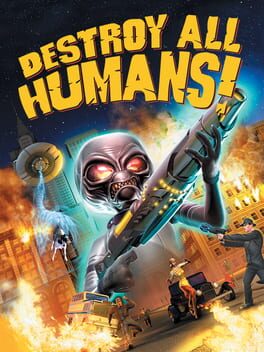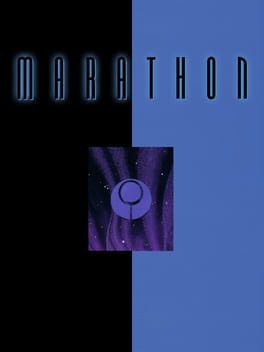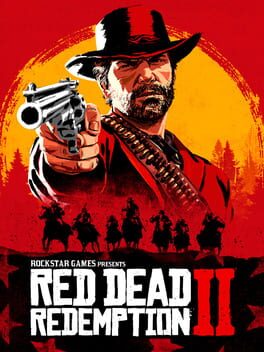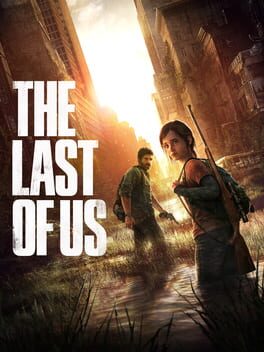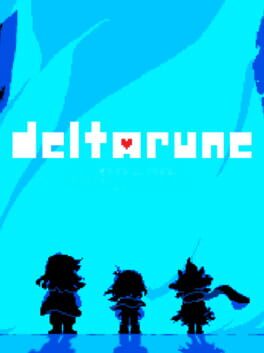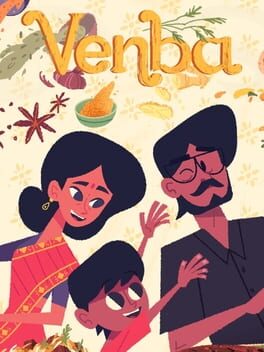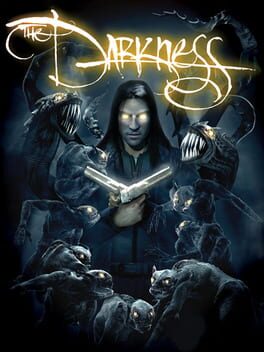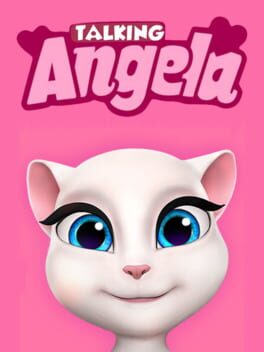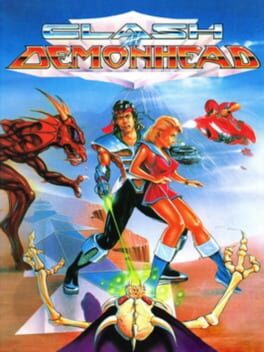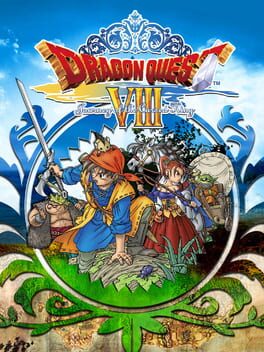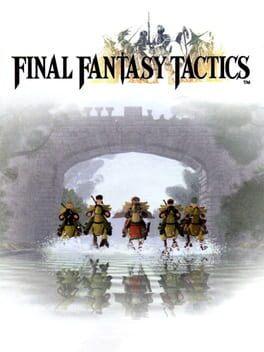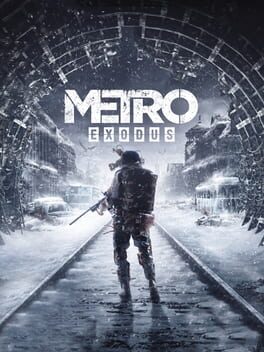HunterMask
1185 reviews liked by HunterMask
Outer Wilds
2019
This review contains spoilers
This is going to be a bit different from my usual reviews. Nowadays when I review games, I prefer to do so while my most recent experience with it is fresh in my mind. Sadly, when I first played Outer Wilds a few years ago, I didn’t write a review for it, and as you likely know by now, the game is a once in a lifetime experience. That’s not just me being hyperbolic for the sake of gassing the game up as much as I possibly can. The game is designed in a way that you can really only ever get the most out of it a single time. Sure you could go through the motions of filling out the ship’s log again, but the entire ethos of Outer Wilds hinges on discovery. Once you’ve figured out the answers to its mysteries and you learn what you need to do to clear the game, you can never enjoy it the same way again. As such, nothing I write will be able to accurately capture those feelings I experienced when I first played the game. However, after recently finishing the Echoes of the Eye DLC and realizing I’m not especially satisfied with my non-spoiler review of the game, I’ve decided to make an effort to at least try.
Like I said, discovery is the ethos of Outer Wilds, and that’s what makes this game so euphoric. Each planet is so much fun to explore. They’re all layered with so many elements that make them intriguing. They’ll either have unique physics like the more intense gravity of Giant’s Deep or the pocket dimension seeds that can be found in the Dark Bramble, or they drastically change over the course of the loop like the Ash Twins and Brittle Hollow. All planets also feature logs of the Nomai people, pointing you in the direction of the Eye of the Universe, as well as allowing you to learn more about their history, culture, and legacy. As you play the game more and more, you constantly learn new things about this fascinating galaxy, which feels incredible and appeals to your sense of curiosity to make you want to play the game more.
The developers have frequently cited The Legend of Zelda - my personal favorite video game franchise, as a major influence on the game, and it definitely shows. I remember all throughout my playthrough feeling a very similar sense of childlike wonder that I feel whenever I play a Zelda game. That feeling, that sense of adventure, is one that I greatly cherish. It reminds me of more innocent times, and it makes me very excited and joyful when games I play manage to evoke it. I love it when games encourage me to want to visit every nook and cranny of it’s world (or in Outer Wilds’ case, its universe) by making everything you can find all worthwhile instead of filling the game with fluff for the sake of making it seem bigger than it is. Every planet, and everything you can find on those planets, ties into the game’s overall goals of figuring out what you can do to keep the sun from exploding, as well as tracking down the Eye of the Universe. Finding everything there is to discover, as well as figuring out how all of those things you discover are connected not just with one another, but your main goals as well, is indescribably satisfying.
The game’s core controls can definitely take some getting used to, and is a common point where I see a lot of people struggle. The “tutorial” with the remote control ship on Timber Hearth does not do a very good job at simulating the controls of flying the actual spaceship you use throughout the game, but at the same time, you do get the gist of it, and it’s not too dissimilar from controlling your own playable character in zero gravity. The more you play the game, the more you get used to them, as you do with any other game that has competent controls, and beating the game does require a fundamental understanding of them.
The time loop itself is a constant source of anxiety all throughout the game. In some ways, it can cause you to make mistakes, since there are so many instances where you need to be in a specific location at a certain point in time over the course of the loop, and you can accidentally kill yourself or destroy your ship trying to get somewhere in a hurry because you’re rushing. It can also be a bit annoying at times. You could be in the middle of making some kind of important discovery right as the sun is exploding. At the same time though, the time loop also pushes the player to get better at the game. The concept of an open-ended exploration game requiring a level of skill may sound strange, but it’s true. The time loop pushes you to not only get better at handling your character and ship, but to also memorize the planets and the locations within them, as well as how to get to them as quickly and easily as possible.
Its storytelling is excellent. Normally, I’m not a fan of when games tell their story through extensive log entries. It feels like homework that you need to do in order to get the context for the plot which the game itself doesn’t really provide. Games like Transistor and DOOM Eternal are two examples that immediately come to mind. Outer Wilds manages to make storytelling through logs fun by writing them in a way that tells a story as it unfolds. They not only provide context to the current state of the location you're exploring as well as the Nomai’s actions, but they also serve as pieces of the game’s overall puzzle. The Nomai logs are actually a reward, rather than homework. Another storytelling element the game does masterfully well is how it ties in its narrative themes with its gameplay. You need to make the best use of what time you have in your life. That’s both one of the key themes of the game as well as what you literally do over the course of each time loop you go through. Then there’s the finale. No words can really capture the sheer wonder and the overwhelming multitude of emotions you experience over the course of it. Thematically and cinematically it’s one of, if not the most concise and impactful endings in any video game I’ve ever played.
Outer Wilds is the game that I feel like is the closest to being perfect that I have ever played. While I do prefer other games for reasons such as their gameplay or aesthetics, I can ultimately find flaws in them that can detract from the experience, even in minor ways. For Outer Wilds, it’s very difficult to find anything wrong with it without doing the most egregious nitpicking imaginable. The closest thing to a flaw that I could think of was that the planets themselves aren’t constructed in a way where they actually feel like they’re planets. They’re way too small to be a planet, as evidenced by the single teeny-tiny villages and settlements you can find on most of them. Despite this, the game still manages to capture the feeling of traveling to distinct planets thanks to each world’s unique characteristics and how they change over the course of each loop. Even if the planets aren’t big enough to feel like actual planets, they are the perfect size for the game’s core gameplay.
The one single game that I choose to recommend to anyone is Outer Wilds. It may not appeal to everyone per se, especially if they don’t have a natural sense of curiosity and aren’t especially fond of doing a lot of reading in their games, but I still think it’s worth it for everyone to at the very least give the game a shot. Despite taking clear inspiration from specific pieces of media, the developers managed to create something wholly unique and original. There’s nothing out there right now at the time of writing this that’s like Outer Wilds. It is a true, honest to god, once in a lifetime experience that can’t easily be replicated. Sure, there might be other games out there that I prefer to Outer Wilds despite their flaws, but in all honesty, this is the greatest game I’ve ever played. It is a nearly flawless masterpiece and one of the most genuine, sincere, and beautiful works of art I have ever experienced.
Like I said, discovery is the ethos of Outer Wilds, and that’s what makes this game so euphoric. Each planet is so much fun to explore. They’re all layered with so many elements that make them intriguing. They’ll either have unique physics like the more intense gravity of Giant’s Deep or the pocket dimension seeds that can be found in the Dark Bramble, or they drastically change over the course of the loop like the Ash Twins and Brittle Hollow. All planets also feature logs of the Nomai people, pointing you in the direction of the Eye of the Universe, as well as allowing you to learn more about their history, culture, and legacy. As you play the game more and more, you constantly learn new things about this fascinating galaxy, which feels incredible and appeals to your sense of curiosity to make you want to play the game more.
The developers have frequently cited The Legend of Zelda - my personal favorite video game franchise, as a major influence on the game, and it definitely shows. I remember all throughout my playthrough feeling a very similar sense of childlike wonder that I feel whenever I play a Zelda game. That feeling, that sense of adventure, is one that I greatly cherish. It reminds me of more innocent times, and it makes me very excited and joyful when games I play manage to evoke it. I love it when games encourage me to want to visit every nook and cranny of it’s world (or in Outer Wilds’ case, its universe) by making everything you can find all worthwhile instead of filling the game with fluff for the sake of making it seem bigger than it is. Every planet, and everything you can find on those planets, ties into the game’s overall goals of figuring out what you can do to keep the sun from exploding, as well as tracking down the Eye of the Universe. Finding everything there is to discover, as well as figuring out how all of those things you discover are connected not just with one another, but your main goals as well, is indescribably satisfying.
The game’s core controls can definitely take some getting used to, and is a common point where I see a lot of people struggle. The “tutorial” with the remote control ship on Timber Hearth does not do a very good job at simulating the controls of flying the actual spaceship you use throughout the game, but at the same time, you do get the gist of it, and it’s not too dissimilar from controlling your own playable character in zero gravity. The more you play the game, the more you get used to them, as you do with any other game that has competent controls, and beating the game does require a fundamental understanding of them.
The time loop itself is a constant source of anxiety all throughout the game. In some ways, it can cause you to make mistakes, since there are so many instances where you need to be in a specific location at a certain point in time over the course of the loop, and you can accidentally kill yourself or destroy your ship trying to get somewhere in a hurry because you’re rushing. It can also be a bit annoying at times. You could be in the middle of making some kind of important discovery right as the sun is exploding. At the same time though, the time loop also pushes the player to get better at the game. The concept of an open-ended exploration game requiring a level of skill may sound strange, but it’s true. The time loop pushes you to not only get better at handling your character and ship, but to also memorize the planets and the locations within them, as well as how to get to them as quickly and easily as possible.
Its storytelling is excellent. Normally, I’m not a fan of when games tell their story through extensive log entries. It feels like homework that you need to do in order to get the context for the plot which the game itself doesn’t really provide. Games like Transistor and DOOM Eternal are two examples that immediately come to mind. Outer Wilds manages to make storytelling through logs fun by writing them in a way that tells a story as it unfolds. They not only provide context to the current state of the location you're exploring as well as the Nomai’s actions, but they also serve as pieces of the game’s overall puzzle. The Nomai logs are actually a reward, rather than homework. Another storytelling element the game does masterfully well is how it ties in its narrative themes with its gameplay. You need to make the best use of what time you have in your life. That’s both one of the key themes of the game as well as what you literally do over the course of each time loop you go through. Then there’s the finale. No words can really capture the sheer wonder and the overwhelming multitude of emotions you experience over the course of it. Thematically and cinematically it’s one of, if not the most concise and impactful endings in any video game I’ve ever played.
Outer Wilds is the game that I feel like is the closest to being perfect that I have ever played. While I do prefer other games for reasons such as their gameplay or aesthetics, I can ultimately find flaws in them that can detract from the experience, even in minor ways. For Outer Wilds, it’s very difficult to find anything wrong with it without doing the most egregious nitpicking imaginable. The closest thing to a flaw that I could think of was that the planets themselves aren’t constructed in a way where they actually feel like they’re planets. They’re way too small to be a planet, as evidenced by the single teeny-tiny villages and settlements you can find on most of them. Despite this, the game still manages to capture the feeling of traveling to distinct planets thanks to each world’s unique characteristics and how they change over the course of each loop. Even if the planets aren’t big enough to feel like actual planets, they are the perfect size for the game’s core gameplay.
The one single game that I choose to recommend to anyone is Outer Wilds. It may not appeal to everyone per se, especially if they don’t have a natural sense of curiosity and aren’t especially fond of doing a lot of reading in their games, but I still think it’s worth it for everyone to at the very least give the game a shot. Despite taking clear inspiration from specific pieces of media, the developers managed to create something wholly unique and original. There’s nothing out there right now at the time of writing this that’s like Outer Wilds. It is a true, honest to god, once in a lifetime experience that can’t easily be replicated. Sure, there might be other games out there that I prefer to Outer Wilds despite their flaws, but in all honesty, this is the greatest game I’ve ever played. It is a nearly flawless masterpiece and one of the most genuine, sincere, and beautiful works of art I have ever experienced.
Shadow the Hedgehog
2005
I Am... All Of Me.
Shadow the Hedgehog has been my favorite Sonic character ever since Sonic Adventure 2, so naturally I was looking forward to trying out the one game, where he plays the main role - despite the overall divisive reception of Shadow 2005.
That being said, you know you're in for a ride when the very first level already leaves a sour taste in your mouth. Have you ever wondered how Shadow would control like if he was constantly ice-skating? Probably not, but Shadow 2005 takes that question off your mind by providing you with physics that feel floaty and entirely different from the previous 3D games. Even with those complaints in the beginnning, everything was still tolerable enough for me to keep my motivation to a certain point, but while playing through Iron Jungle, it dawned on me that this game was infamous for a reason. The cherry on top was the Egg Breaker boss afterwards though, who should have been named Camera Breaker, cause that's all he does while Shadow is running little laps around the base in the center of the arena ad infinitum. No offense to Lava Shelter though, it was the final level on the route I played and I actually enjoyed it a good amount after the mess that the previous stage was.
Enough talk about the gameplay, as the unique way of storytelling is also a key aspect of Shadow 2005. There are unironically 326 possible routes to play and they even have their own unique names - but it doesn't change the fact that the storytelling is nonsensical in many cases. So basically there's an alignment system in the levels, which you can advance through completing certain objectives towards your alignment. If you want to be evil, do Black Doom's requests. If you want to remain neutral, just run through the level and get the Chaos Emerald. This way of storytelling is actually an interesting concept for a game like Shadow the Hedgehog, as he is this morally ambiguous character, who can be easily interpreted as a player for both sides. Depending on which objectives you complete, the selection of levels across the stage flowchart changes accordingly and I'm sure the idea is that you don't have to play the same levels twice. Quite ironic, considering you have to play through Westopolis at least ten times in order to see the true ending, all while doing the same, repetitive tasks. Considering the amount of "kill [x] amount of enemy" challenges present, it would have been nice if you weren't required to kill every single enemy in the stage. You missed one? Good luck backtracking and finding them, cause the game surely won't tell you where to search. I couldn't really bring myself to do those challenges, so I went for a run that's mostly on the neutral side, but even that required me to play arduous levels like Iron Jungle to the end. Playing it several times would not be something on my priority list, so I only played a single route and called it quits for now.
Sorry for the amount of unorganized rambling in the second half. I still had my fair share of fun with Shadow the Hedgehog, even if some of it comes from a "so bad it's good again" perspective, cause there's something about it that sticks with me here, but I can't quite put my finger on it. Either way, if I have to give the game some credit where it's due, it's for the soundtrack - the remix for Eggman's theme and the title theme "I Am... All Of Me" are both bangers.
Shadow the Hedgehog has been my favorite Sonic character ever since Sonic Adventure 2, so naturally I was looking forward to trying out the one game, where he plays the main role - despite the overall divisive reception of Shadow 2005.
That being said, you know you're in for a ride when the very first level already leaves a sour taste in your mouth. Have you ever wondered how Shadow would control like if he was constantly ice-skating? Probably not, but Shadow 2005 takes that question off your mind by providing you with physics that feel floaty and entirely different from the previous 3D games. Even with those complaints in the beginnning, everything was still tolerable enough for me to keep my motivation to a certain point, but while playing through Iron Jungle, it dawned on me that this game was infamous for a reason. The cherry on top was the Egg Breaker boss afterwards though, who should have been named Camera Breaker, cause that's all he does while Shadow is running little laps around the base in the center of the arena ad infinitum. No offense to Lava Shelter though, it was the final level on the route I played and I actually enjoyed it a good amount after the mess that the previous stage was.
Enough talk about the gameplay, as the unique way of storytelling is also a key aspect of Shadow 2005. There are unironically 326 possible routes to play and they even have their own unique names - but it doesn't change the fact that the storytelling is nonsensical in many cases. So basically there's an alignment system in the levels, which you can advance through completing certain objectives towards your alignment. If you want to be evil, do Black Doom's requests. If you want to remain neutral, just run through the level and get the Chaos Emerald. This way of storytelling is actually an interesting concept for a game like Shadow the Hedgehog, as he is this morally ambiguous character, who can be easily interpreted as a player for both sides. Depending on which objectives you complete, the selection of levels across the stage flowchart changes accordingly and I'm sure the idea is that you don't have to play the same levels twice. Quite ironic, considering you have to play through Westopolis at least ten times in order to see the true ending, all while doing the same, repetitive tasks. Considering the amount of "kill [x] amount of enemy" challenges present, it would have been nice if you weren't required to kill every single enemy in the stage. You missed one? Good luck backtracking and finding them, cause the game surely won't tell you where to search. I couldn't really bring myself to do those challenges, so I went for a run that's mostly on the neutral side, but even that required me to play arduous levels like Iron Jungle to the end. Playing it several times would not be something on my priority list, so I only played a single route and called it quits for now.
Sorry for the amount of unorganized rambling in the second half. I still had my fair share of fun with Shadow the Hedgehog, even if some of it comes from a "so bad it's good again" perspective, cause there's something about it that sticks with me here, but I can't quite put my finger on it. Either way, if I have to give the game some credit where it's due, it's for the soundtrack - the remix for Eggman's theme and the title theme "I Am... All Of Me" are both bangers.
Stellar Blade
2024
It’s really a shame that reactions to Stellar Blade are more focused on the fanservice or the coomer reactions. You got one group of people who just focus on the fanservice and hail the game to be the savior of sexualized women in gaming, and then you got the other group who view the game in a negative light because of the first group. And you know what? I can’t even blame them because the first group is really insufferable.
I don't care in the slightest about Stellar Blade having a "sexy" protagonist. I saw a trailer for it once and was immediately interested, because of how fun and unique it looked.
But coomers saw the female Protagonist’s butt and were obnoxious about it ever since. Like come on, it’s bottom of the barrel fanservice you’re going all crazy for. Literally everything I've seen about this game online is people with underaged anime character avatars cream their pants over how this game is "destroying wokeness" or whatever. Nothing against Eve, because she is really pretty and I actually really like her, but she looks like every female character in every korean MMO ever made. It's like people going to war over white bread. Apparently, these guys are now whining about censorship, signing petitions, and making videos of themselves (they look about as you'd expect) about why their cause matters lmao. These pathetic gamerbros will never not be incredibly annoying and cringe to me.
Because Stellar Blade is just so much more. Picture all those apocalyptic gachas and their really great world-building, fantastic atmosphere but really cheap and dull (chibi) gameplay, then amp it up to AAA levels – that's the magic of Stellar Blade.
The environments are beautifully crafted and the atmospheric soundtrack is another aspect I deeply appreciate and thoroughly enjoyed in this game. There's nothing quite like losing yourself in a captivating melody as you journey through vast, lonely landscapes and cities. Just like Nier, Stellar Blade really nailed its soundtrack.
The gameplay is just so much fun and showcases an exceptional level of refinement and polish. Every movement, dodge and parry hit the mark perfectly. The more skills you unlock, the cooler and more fun the combat gets. There's never a dull moment - the gameplay remains consistently exciting and stylish from start to finish.
I found the plot to be really intriguing, and I really enjoyed uncovering plenty of secrets and snippets of lore. But what really surprised me were the sidequests. Sure, some were usual filler content, but most served to make the world feel alive and deepened the lore. Completing them was enjoyable, they never felt like a chore. So good job there.
Oh, and I'm pleasantly surprised by Eve! Initially, I expected her to be the typical "waifu" (ugh, I hate that word), merely there for visual appeal with little personality beyond conforming to generic “anime girl” tropes. Most of these tropes revolve around being “innocent”, "naive" or a "sweet flower girl." But Eve defies those expectations, and I couldn't be happier about it.
Even though Stellar Blade took huge inspiration from Nier and other apocalyptic gacha games, it's still an extremely unique and fun game that everyone should give a chance. Don't listen to the manchildren throwing tantrums or all the buzz about the “fanservice," which is honestly vastly overexaggerated due to some optional skins. Honestly, aside from the optional skins, there are absolutely no horny aspects present in the game.
There are just so many little touches to the point where you can tell the developers really cared about making this game great, and they succeeded. Stellar Blade is simply a beautiful game.
I don't care in the slightest about Stellar Blade having a "sexy" protagonist. I saw a trailer for it once and was immediately interested, because of how fun and unique it looked.
But coomers saw the female Protagonist’s butt and were obnoxious about it ever since. Like come on, it’s bottom of the barrel fanservice you’re going all crazy for. Literally everything I've seen about this game online is people with underaged anime character avatars cream their pants over how this game is "destroying wokeness" or whatever. Nothing against Eve, because she is really pretty and I actually really like her, but she looks like every female character in every korean MMO ever made. It's like people going to war over white bread. Apparently, these guys are now whining about censorship, signing petitions, and making videos of themselves (they look about as you'd expect) about why their cause matters lmao. These pathetic gamerbros will never not be incredibly annoying and cringe to me.
Because Stellar Blade is just so much more. Picture all those apocalyptic gachas and their really great world-building, fantastic atmosphere but really cheap and dull (chibi) gameplay, then amp it up to AAA levels – that's the magic of Stellar Blade.
The environments are beautifully crafted and the atmospheric soundtrack is another aspect I deeply appreciate and thoroughly enjoyed in this game. There's nothing quite like losing yourself in a captivating melody as you journey through vast, lonely landscapes and cities. Just like Nier, Stellar Blade really nailed its soundtrack.
The gameplay is just so much fun and showcases an exceptional level of refinement and polish. Every movement, dodge and parry hit the mark perfectly. The more skills you unlock, the cooler and more fun the combat gets. There's never a dull moment - the gameplay remains consistently exciting and stylish from start to finish.
I found the plot to be really intriguing, and I really enjoyed uncovering plenty of secrets and snippets of lore. But what really surprised me were the sidequests. Sure, some were usual filler content, but most served to make the world feel alive and deepened the lore. Completing them was enjoyable, they never felt like a chore. So good job there.
Oh, and I'm pleasantly surprised by Eve! Initially, I expected her to be the typical "waifu" (ugh, I hate that word), merely there for visual appeal with little personality beyond conforming to generic “anime girl” tropes. Most of these tropes revolve around being “innocent”, "naive" or a "sweet flower girl." But Eve defies those expectations, and I couldn't be happier about it.
Even though Stellar Blade took huge inspiration from Nier and other apocalyptic gacha games, it's still an extremely unique and fun game that everyone should give a chance. Don't listen to the manchildren throwing tantrums or all the buzz about the “fanservice," which is honestly vastly overexaggerated due to some optional skins. Honestly, aside from the optional skins, there are absolutely no horny aspects present in the game.
There are just so many little touches to the point where you can tell the developers really cared about making this game great, and they succeeded. Stellar Blade is simply a beautiful game.
Immortals of Aveum
2023
The extra half star is purely for the visuals and the ideas that were presented in this game.
Everything else about this was so boring / bad it wasn't worth me trying to keep playing. The game opens with story beats that are meant to feel emotional but just happen suddenly and without much exposition or time to even get invested that it just feels like a weird joke, the voice acting is not good, the magic gunplay seemed like it would be fun but you're just cycling through red, blue, and green magic and color coding them to enemies in ways that never really feel fluid or that they're making sense all while the FPS eventually tanks once there's too many different colors on screen. I was slightly interested in the background of the world but even that got ruined once I realized the red, green, and blue magic were called exactly that, everything here is surface level. I feel bad for anyone that paid full price for this and could not get a refund.
Everything else about this was so boring / bad it wasn't worth me trying to keep playing. The game opens with story beats that are meant to feel emotional but just happen suddenly and without much exposition or time to even get invested that it just feels like a weird joke, the voice acting is not good, the magic gunplay seemed like it would be fun but you're just cycling through red, blue, and green magic and color coding them to enemies in ways that never really feel fluid or that they're making sense all while the FPS eventually tanks once there's too many different colors on screen. I was slightly interested in the background of the world but even that got ruined once I realized the red, green, and blue magic were called exactly that, everything here is surface level. I feel bad for anyone that paid full price for this and could not get a refund.
Garten of Banban 7
2024
Animal Well
2024
This is THE quintessential Kirby game. If someone wants to try just a single Kirby game, you point to this one. Everything that pretty much becomes a mainstay in the franchise most likely stems from this one.
It just plays so well. The difficulty is JUST right and there is the added bonus of drop in Coop. Almost every copy ability is satisfying to use and the artstyle is gorgeous. Level design is some of the best in all of Kirby.
I love how levels are presented as "episodes" each with their own gimmick. Like the the tutorial episode is called Spring Breeze, which is a modern homage to Kirby's Dream Land. Then you have a more traditional Kirby episode like Dynablade. Then the Great Cave Offensive episode which is exploration based, encouraging you to find all treasures before completing the level. My personal favorite is Milky Way Wishes which kind of plays like a Kirby metroidvania that has you exploring planets to find copy abilities as permanent upgrades. All of these episodes hit and absolutely do not miss. It also has the benefit of keeping the game feel fresh all the way through.
The original Super Star is a 9/10 (4.5 stars) as it was almost perfect, but just fell short of having enough content to completely satisfy me. With Kirby Super Star Ultra, it not only comes with better QoL features and visuals, but you have FOUR extra hard hard mode episodes - which easily elevates this game to a perfect score. Having a nice extra CHALLENGING post game with cool unlockables after beating the main game gives Super Star so much more life and is the definitive way to experience this game.
It just plays so well. The difficulty is JUST right and there is the added bonus of drop in Coop. Almost every copy ability is satisfying to use and the artstyle is gorgeous. Level design is some of the best in all of Kirby.
I love how levels are presented as "episodes" each with their own gimmick. Like the the tutorial episode is called Spring Breeze, which is a modern homage to Kirby's Dream Land. Then you have a more traditional Kirby episode like Dynablade. Then the Great Cave Offensive episode which is exploration based, encouraging you to find all treasures before completing the level. My personal favorite is Milky Way Wishes which kind of plays like a Kirby metroidvania that has you exploring planets to find copy abilities as permanent upgrades. All of these episodes hit and absolutely do not miss. It also has the benefit of keeping the game feel fresh all the way through.
The original Super Star is a 9/10 (4.5 stars) as it was almost perfect, but just fell short of having enough content to completely satisfy me. With Kirby Super Star Ultra, it not only comes with better QoL features and visuals, but you have FOUR extra hard hard mode episodes - which easily elevates this game to a perfect score. Having a nice extra CHALLENGING post game with cool unlockables after beating the main game gives Super Star so much more life and is the definitive way to experience this game.
Sonic Adventure 2
2001
Sonic Adventure 1 Review
I recently went on a nostalgia trip by experiencing the original version of Sonic Adventure for the first time, after only having played the DX version on the GameCube. Once I finished it, I decided to continue that nostalgia trip by going ahead and playing through the Dreamcast version of its sequel as well. I was quite fond of both games as a kid, but at some point, I got the idea in my head that the first Adventure was better than the second. After coming back to both games, I no longer believe that to be true. Both games have problems, but Sonic Adventure 2 is a far more consistent and polished experience. It definitely has some low points, but it’s still a solid improvement over its predecessor that trims a lot of its fat.
After Dr. Eggman looks into his family history, he discovers a top secret project that was worked on by his grandfather, Dr. Gerald Robotnik. He infiltrates a military base where this project was being stored and uncovers Shadow the Hedgehog: The Ultimate Lifeform. Shadow promises Eggman a wish and brings Eggman to the Space Colony ARK, where he shows off the Eclipse Canon, a weapon of mass destruction powered by the seven Chaos Emeralds. Meanwhile, the military mistakes Sonic for Shadow, and their forces set out to capture him, all the while completely unaware they’re chasing after the wrong hedgehog. Sonic, Tails and Knuckles once again band together to take down Eggman, Shadow, and the mysterious Rouge the Bat and clear Sonic’s name before Eggman and his allies manage to obtain all of the Chaos Emeralds and power up the Eclipse Canon.
Instead of each playable character having their own unique campaign to play through, the main story of Sonic Adventure 2 is told through two campaigns that each star three characters. There’s Hero, which stars the classic trio of Sonic, Tails and Knuckles, and Dark, which stars Dr. Eggman and newcomers Shadow the Hedgehog and Rouge the Bat. One character from each campaign share a different style of gameplay that comes from the first Adventure. This time around each character has their own unique stages, unlike in the previous game, where you generally played through chopped up versions of Sonic’s stages. For the most part, each character having their own unique stage is to Sonic Adventure 2’s benefit, and while some stages do have flaws that I’ll be getting into, at the very least this keeps the game from feeling as repetitive as Sonic Adventure did with its stages.
Sonic and Shadow’s stages feature the same speed focused platforming gameplay as Sonic’s stages from Adventure. They’re no longer composed of multiple sections, but the stages themselves are still comparable in length to the ones from the previous game. These stages are all fantastic, and once again, easily the best part of the game in general. They’re all laser focused on bringing out the best of these characters’ gameplay. I also had significantly less issues with the camera this time around, which was one of my biggest hang ups with the first Adventure. There were definitely still times where the camera would freak out or not cooperate, but not nearly as much as in the previous game.
Tails and Eggman’s gameplay is a more refined version of E-102 Gamma’s gameplay from the previous game. Tails and Eggman each pilot a small mech, and they run and gun throughout their stages with the same auto-homing shots as Gamma. This is where each character having their own unique stage really shines, as Tails and Eggman’s stages offer unique platforming challenges built around their moveset. Their stages are a lot longer compared to Gamma’s as well, giving a chance for their gameplay to actually breathe. My biggest complaint with Gamma’s gameplay and stages was that they all felt rather braindead. Since your projectiles automatically homed in on whatever you target, there wasn’t really anything stopping you from just targeting everything without any second thought. Tails and Eggman’s gameplay isn’t quite as trivial as Gamma’s was. While it’s still rather easy for the most part, there are actually a few enemies that require you to time your shots, as well as a couple of stages that will actually punish you for mindlessly targeting and shooting everything with environmental hazards that can cause you to take damage or die if you end up shooting them, which is a great way to force you to pay attention to what you’re shooting.
Finally, Knuckles and Rouge share Knuckles’ exploration-based gameplay from Adventure , where you search through stages for pieces of the Master Emerald. Unfortunately, despite also being given unique stages, Knuckles and Rouge’s gameplay isn’t a direct upgrade from Adventure, and it’s during their stages where a lot of my problems with the game stem from. For starters, the Emerald Radar, which is a tool that would beep at increasingly faster speeds the closer you get to an Emerald piece, was changed so that it only detects one Emerald piece at a time, whereas in Adventure, it could detect all three pieces at once. I have a theory about why this was done: Knuckles stages in Adventure tended to be rather small in terms of scale, and having the radar being able to detect all three Emerald pieces at once made it easy to find them rather quickly. In Adventure 2 however, all of Knuckles’ (and Rogue’s) stages are a lot larger compared to Knuckles’ stages in the previous game, so it makes hunting down the Emerald pieces one at a time take a lot longer. This problem gets worse with each subsequent stage, as they get larger and larger, coming to a head with the stages Meteor Herd and Mad Space, the final stages for Knuckles and Rouge respectively. These stages are so large that it can take up to 15 minutes to beat them if you’re unlucky with where the Emerald pieces are placed. Also, the one key difference between the Dreamcast version and the GameCube version of Sonic Adventure 2 that would make me recommend the latter over the former is that if Knuckles or Rouge walk or climb over a surface where an Emerald piece is buried, an exclamation point will appear above their head, letting you know that the piece is buried in that specific spot. This exclamation point doesn’t appear in the Dreamcast version, which made trying to find buried Emerald pieces a much bigger headache.
One aspect of Sonic Adventure that I completely forgot to talk about in my review for it was its various hub worlds that you need to travel through in-between stages. The main reason why I forgot to mention them was because of how little they really added to the game. They felt like they were just there for the sake of being there. They were rather small, they weren’t very interesting to explore, and there wasn’t much you could do in them besides just going into one of the characters’ levels or the Chao Garden. You could find some optional power ups for characters, which admittedly were kind of useful, but also weren’t necessary to finish the game and didn’t really enrich the experience that much further. As such, it’s no surprise that they were cut from Sonic Adventure 2, which was truly for the best. Instead, each campaign simply has one character’s stage follow another, and you can travel to the Chao Garden by finding a Chao Key item in a stage.
The story is a bit more straightforward and less ambitious than Sonic Adventure’s, but I think that was for the best, as it flows a lot better. It’s a Sonic game, so the writing isn’t some airtight masterwork of fiction, but it’s a decent enough story with some high stakes and thrilling moments. There are some aspects to the story that, even as a kid, I thought were questionable. In particular, the fact that anyone could confuse Sonic for Shadow and vice versa when they look nothing alike always confused me, even back then. Also Amy Rose appears as a non-playable character in the story, and her presence in general really confuses me. She frequently just… appears in locations with little to no explanation. It feels like she was meant to have a larger role in the game that got cut down heavily. The voice acting sounds a lot better this time around. Some characters do still sound a bit stiff like Tails and Rouge, but everyone else sounds like they have a lot more energy and are actually trying with their performances. Though Deem Bristow’s Eggman once again steals the show, I really gotta say, I feel like Ryan Drummond’s Sonic in particular has significantly improved. He sounds way more lively than before, and he does a better job capturing Sonic’s wit and attitude.
The music continues the Sonic series’ tradition of being fantastic. Something that I noticed during this playthrough is that each character has a specific type of music that plays during their stages. Sonic’s stages have fast paced punk rock tracks, Tails has upbeat rock that occasionally features some synthesizers, Knuckles has old school hip hop, Shadow features very bass heavy techno with distorted vocals, Eggman has heavy rock tracks that feature a lot of synthesizers, and Rouge has upbeat jazz tracks very reminiscent of spy films like the 007 movies, but with a lot of sensual sounding female background vocals. It’s a really excellent touch, and I very much dig how each stage’s song feels like it was tailored not just for the stage, but for the characters themselves. Some of my favorite tracks include Green Forest, Pumpkin Hill, White Jungle, and Cosmic Wall. (Yes I like City Escape too, I just thought claiming it as a favorite would be disingenuous and boring).
One of the game’s most notable issues is how truly awful its audio mixing and sound design is. Sound effects are deafeningly loud, in particular Tails and Eggman’s targeting laser as well as the Emerald Radar in Knuckles and Rouge’s stages. They both beep obnoxiously loudly. In stages where the Military are pursuing you like in Metal Harbor, Weapons Bed, or Mission Street, there will be this airplane engine sound effect that is also just so ridiculously loud it drowns out all of the other sounds and music that plays on the stage. Meanwhile the dialogue is too quiet, and characters frequently talk over each other. This can lead to some funny exchanges, such as during the cutscene where Sonic and Shadow battle one another on Prison Island, which for whatever reason has always tickled my funny bone even when I was little. The sound design doesn’t make the game unplayable by any means, but it’s very noticeable, jarring and annoying.
I was surprised to find that I still dig Sonic Adventure 2, at least more than I expected to after revisiting Sonic Adventure just before. There was a clear effort to improve upon Sonic Adventure, and I really respect that. I do think they did a rather decent job doing so for the most part. The Knuckles and Rouge stages are definitely a drag, the audio mixing is rather horrendous, and there are aspects of the story that can be a bit questionable, but the game as a whole still manages to be a pretty good time despite that, thanks to the excellent gameplay and level design of the other characters’ stages. At its best, Sonic Adventure 2 still manages to be hype even after all these years, and that’s not just the nostalgia talking.
I recently went on a nostalgia trip by experiencing the original version of Sonic Adventure for the first time, after only having played the DX version on the GameCube. Once I finished it, I decided to continue that nostalgia trip by going ahead and playing through the Dreamcast version of its sequel as well. I was quite fond of both games as a kid, but at some point, I got the idea in my head that the first Adventure was better than the second. After coming back to both games, I no longer believe that to be true. Both games have problems, but Sonic Adventure 2 is a far more consistent and polished experience. It definitely has some low points, but it’s still a solid improvement over its predecessor that trims a lot of its fat.
After Dr. Eggman looks into his family history, he discovers a top secret project that was worked on by his grandfather, Dr. Gerald Robotnik. He infiltrates a military base where this project was being stored and uncovers Shadow the Hedgehog: The Ultimate Lifeform. Shadow promises Eggman a wish and brings Eggman to the Space Colony ARK, where he shows off the Eclipse Canon, a weapon of mass destruction powered by the seven Chaos Emeralds. Meanwhile, the military mistakes Sonic for Shadow, and their forces set out to capture him, all the while completely unaware they’re chasing after the wrong hedgehog. Sonic, Tails and Knuckles once again band together to take down Eggman, Shadow, and the mysterious Rouge the Bat and clear Sonic’s name before Eggman and his allies manage to obtain all of the Chaos Emeralds and power up the Eclipse Canon.
Instead of each playable character having their own unique campaign to play through, the main story of Sonic Adventure 2 is told through two campaigns that each star three characters. There’s Hero, which stars the classic trio of Sonic, Tails and Knuckles, and Dark, which stars Dr. Eggman and newcomers Shadow the Hedgehog and Rouge the Bat. One character from each campaign share a different style of gameplay that comes from the first Adventure. This time around each character has their own unique stages, unlike in the previous game, where you generally played through chopped up versions of Sonic’s stages. For the most part, each character having their own unique stage is to Sonic Adventure 2’s benefit, and while some stages do have flaws that I’ll be getting into, at the very least this keeps the game from feeling as repetitive as Sonic Adventure did with its stages.
Sonic and Shadow’s stages feature the same speed focused platforming gameplay as Sonic’s stages from Adventure. They’re no longer composed of multiple sections, but the stages themselves are still comparable in length to the ones from the previous game. These stages are all fantastic, and once again, easily the best part of the game in general. They’re all laser focused on bringing out the best of these characters’ gameplay. I also had significantly less issues with the camera this time around, which was one of my biggest hang ups with the first Adventure. There were definitely still times where the camera would freak out or not cooperate, but not nearly as much as in the previous game.
Tails and Eggman’s gameplay is a more refined version of E-102 Gamma’s gameplay from the previous game. Tails and Eggman each pilot a small mech, and they run and gun throughout their stages with the same auto-homing shots as Gamma. This is where each character having their own unique stage really shines, as Tails and Eggman’s stages offer unique platforming challenges built around their moveset. Their stages are a lot longer compared to Gamma’s as well, giving a chance for their gameplay to actually breathe. My biggest complaint with Gamma’s gameplay and stages was that they all felt rather braindead. Since your projectiles automatically homed in on whatever you target, there wasn’t really anything stopping you from just targeting everything without any second thought. Tails and Eggman’s gameplay isn’t quite as trivial as Gamma’s was. While it’s still rather easy for the most part, there are actually a few enemies that require you to time your shots, as well as a couple of stages that will actually punish you for mindlessly targeting and shooting everything with environmental hazards that can cause you to take damage or die if you end up shooting them, which is a great way to force you to pay attention to what you’re shooting.
Finally, Knuckles and Rouge share Knuckles’ exploration-based gameplay from Adventure , where you search through stages for pieces of the Master Emerald. Unfortunately, despite also being given unique stages, Knuckles and Rouge’s gameplay isn’t a direct upgrade from Adventure, and it’s during their stages where a lot of my problems with the game stem from. For starters, the Emerald Radar, which is a tool that would beep at increasingly faster speeds the closer you get to an Emerald piece, was changed so that it only detects one Emerald piece at a time, whereas in Adventure, it could detect all three pieces at once. I have a theory about why this was done: Knuckles stages in Adventure tended to be rather small in terms of scale, and having the radar being able to detect all three Emerald pieces at once made it easy to find them rather quickly. In Adventure 2 however, all of Knuckles’ (and Rogue’s) stages are a lot larger compared to Knuckles’ stages in the previous game, so it makes hunting down the Emerald pieces one at a time take a lot longer. This problem gets worse with each subsequent stage, as they get larger and larger, coming to a head with the stages Meteor Herd and Mad Space, the final stages for Knuckles and Rouge respectively. These stages are so large that it can take up to 15 minutes to beat them if you’re unlucky with where the Emerald pieces are placed. Also, the one key difference between the Dreamcast version and the GameCube version of Sonic Adventure 2 that would make me recommend the latter over the former is that if Knuckles or Rouge walk or climb over a surface where an Emerald piece is buried, an exclamation point will appear above their head, letting you know that the piece is buried in that specific spot. This exclamation point doesn’t appear in the Dreamcast version, which made trying to find buried Emerald pieces a much bigger headache.
One aspect of Sonic Adventure that I completely forgot to talk about in my review for it was its various hub worlds that you need to travel through in-between stages. The main reason why I forgot to mention them was because of how little they really added to the game. They felt like they were just there for the sake of being there. They were rather small, they weren’t very interesting to explore, and there wasn’t much you could do in them besides just going into one of the characters’ levels or the Chao Garden. You could find some optional power ups for characters, which admittedly were kind of useful, but also weren’t necessary to finish the game and didn’t really enrich the experience that much further. As such, it’s no surprise that they were cut from Sonic Adventure 2, which was truly for the best. Instead, each campaign simply has one character’s stage follow another, and you can travel to the Chao Garden by finding a Chao Key item in a stage.
The story is a bit more straightforward and less ambitious than Sonic Adventure’s, but I think that was for the best, as it flows a lot better. It’s a Sonic game, so the writing isn’t some airtight masterwork of fiction, but it’s a decent enough story with some high stakes and thrilling moments. There are some aspects to the story that, even as a kid, I thought were questionable. In particular, the fact that anyone could confuse Sonic for Shadow and vice versa when they look nothing alike always confused me, even back then. Also Amy Rose appears as a non-playable character in the story, and her presence in general really confuses me. She frequently just… appears in locations with little to no explanation. It feels like she was meant to have a larger role in the game that got cut down heavily. The voice acting sounds a lot better this time around. Some characters do still sound a bit stiff like Tails and Rouge, but everyone else sounds like they have a lot more energy and are actually trying with their performances. Though Deem Bristow’s Eggman once again steals the show, I really gotta say, I feel like Ryan Drummond’s Sonic in particular has significantly improved. He sounds way more lively than before, and he does a better job capturing Sonic’s wit and attitude.
The music continues the Sonic series’ tradition of being fantastic. Something that I noticed during this playthrough is that each character has a specific type of music that plays during their stages. Sonic’s stages have fast paced punk rock tracks, Tails has upbeat rock that occasionally features some synthesizers, Knuckles has old school hip hop, Shadow features very bass heavy techno with distorted vocals, Eggman has heavy rock tracks that feature a lot of synthesizers, and Rouge has upbeat jazz tracks very reminiscent of spy films like the 007 movies, but with a lot of sensual sounding female background vocals. It’s a really excellent touch, and I very much dig how each stage’s song feels like it was tailored not just for the stage, but for the characters themselves. Some of my favorite tracks include Green Forest, Pumpkin Hill, White Jungle, and Cosmic Wall. (Yes I like City Escape too, I just thought claiming it as a favorite would be disingenuous and boring).
One of the game’s most notable issues is how truly awful its audio mixing and sound design is. Sound effects are deafeningly loud, in particular Tails and Eggman’s targeting laser as well as the Emerald Radar in Knuckles and Rouge’s stages. They both beep obnoxiously loudly. In stages where the Military are pursuing you like in Metal Harbor, Weapons Bed, or Mission Street, there will be this airplane engine sound effect that is also just so ridiculously loud it drowns out all of the other sounds and music that plays on the stage. Meanwhile the dialogue is too quiet, and characters frequently talk over each other. This can lead to some funny exchanges, such as during the cutscene where Sonic and Shadow battle one another on Prison Island, which for whatever reason has always tickled my funny bone even when I was little. The sound design doesn’t make the game unplayable by any means, but it’s very noticeable, jarring and annoying.
I was surprised to find that I still dig Sonic Adventure 2, at least more than I expected to after revisiting Sonic Adventure just before. There was a clear effort to improve upon Sonic Adventure, and I really respect that. I do think they did a rather decent job doing so for the most part. The Knuckles and Rouge stages are definitely a drag, the audio mixing is rather horrendous, and there are aspects of the story that can be a bit questionable, but the game as a whole still manages to be a pretty good time despite that, thanks to the excellent gameplay and level design of the other characters’ stages. At its best, Sonic Adventure 2 still manages to be hype even after all these years, and that’s not just the nostalgia talking.
People say "Separate the art from the artist" but oftentimes, the artist and their sick and twisted perversions are so intertwined with their work that it doesn't even matter, and this is the prime example of that, and even if it weren't, the artist is still bad enough as is without his shit hypothetically not being in the game
That and this game is just horrible; a shoddily coded, barely optimized mess that doesn't even have its main bulk of the game coded in; and it's been 10 fucking years since the game started development!
That and this game is just horrible; a shoddily coded, barely optimized mess that doesn't even have its main bulk of the game coded in; and it's been 10 fucking years since the game started development!
Fallout 3
2008
Writing is lackluster and the combat without VATs is also lackluster but man oh man do i love wandering around in this world, the carrot on a stick Bethesda world just keeps me so engaged - this is what Bethesda are best at or at least they used to be crafting a world that just feels so fun and interesting to explore
93 lists liked by HunterMask
by NOWITSREYNTIME17 |
8 Games
by imshitting420 |
8 Games
by PapaJaeger |
50 Games
by The_Gaming_Dog12 |
12 Games
by CodeNameYogurt |
4 Games
by Zombief |
32 Games
by QuentTheSlayer |
28 Games
by jowhu |
11 Games
by Simply_OverB |
13 Games

